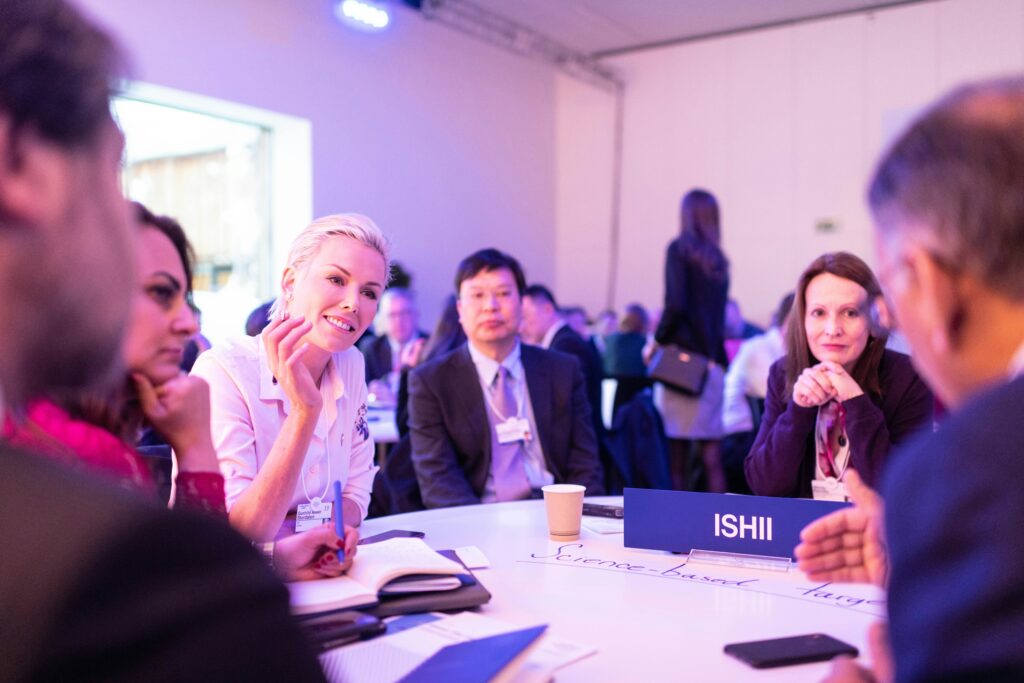GRab your free copy of the 7 Essential Traits of high achieving women
I’ve been coaching people to be their best for over twenty years and love seeing them thrive as they adjust the lens they’re looking through. As a mom of teengaers, I realized that I could use my talent to help moms feel less frustrated, isolated and defeated as their kids navigate the challenging teen years. Helping my clients improve their relationship with themselves and honor their needs is my superpower. You’ll love how your energy shifts and your interactions become more positive after working together! I’m excited for you to experience more peace and confidence and live the life you’re meant to live.
A Strengths-Based Path to Transformation
Leadership Sets the Tone
Every workplace culture starts with the people at the top. Leaders aren’t just decision-makers. They’re the architects of the vibe, and their actions ripple out to shape how everyone else shows up. A single offhand comment, a moment of recognition, or a choice to listen can tip the scales between a team that thrives and one that struggles. Their behaviors don’t just influence culture. They define it.
Consider a leader who dismisses ideas in meetings. Over time, that signals it’s safer to stay quiet than to speak up. Contrast that with one who celebrates a small win publicly. Suddenly, effort feels worth it. The MIT Sloan Review made this clear in 2022: toxic culture, often sparked by leadership missteps, drives turnover ten times more than pay ever could. No raise can outshine a leader who makes people feel small.
Fortunately, leaders can spark something better by leaning into what’s right instead of cracking down on what’s wrong. That’s where Appreciative Inquiry steps in, turning individual responsibility into collective possibility.
Flipping the Script on Culture Change
Most culture fixes begin with a problem hunt. Leaders pinpoint flaws, roll out rules, and hope compliance sticks. Appreciative Inquiry, often called AI, rewrites that approach. It focuses on what’s working and asks, “What’s already strong, and how do we amplify it?” For a leader, this shift is personal. It’s less about fixing the team and more about modeling a mindset that lifts everyone.
Organizations worldwide, from startups to global giants, have used this strengths-based method to foster collaboration and craft workplaces where people don’t just clock in. They connect.

A Practical Guide to Leading the Change
Step 1: Define, Picture What’s Possible
Culture doesn’t shift by accident. It starts with a leader’s choice. Instead of patching every leak, AI invites you to ask: What do I want to grow here? What strengths do I see in my team that I can champion?
Look at Google’s “20% time.” Leaders saw curiosity in their people and gave it room to breathe rather than designing it to solve a slump. That intentional nudge birthed Gmail and Google Maps. As a leader, your first move is setting that kind of tone by deciding what you’ll nurture instead of what you’ll eliminate.
Step 2: Discover, Listen Like It Matters
Great leaders don’t assume. They dig. With AI, that means asking your team about moments they’ve felt unstoppable. When did they shine? What made them proud? Try casual chats about their best days, workshops to spot patterns, or collecting stories of wins that hint at what’s already humming.
Ritz-Carlton’s leaders did this with “Wow Stories,” tales of staff wowing guests. They listened, shared those moments, and let the team’s own excellence lead instead of mandating service. Your curiosity as a leader can uncover the raw material for something bigger.
Step 3: Dream, Imagine the Best Version
Once you’ve got those strengths, pull your team in to dream. Ask: “If we were firing on all cylinders, what would that feel like?” Let them sketch it out with ideal days, honest communication, or leadership that energizes. Guide without dominating, and show them their voice shapes the outcome.
Zappos’ leaders nailed this. They co-created values with their crew that still define their customer obsession. When you dream as a unit, you’re not just a boss. You’re a catalyst for a culture people own.
Step 4: Design, Walk the Talk
Vision needs action. Here, leaders turn insights into moves with rituals that stick, policies that fit, and recognition that lands. Maybe it’s a weekly shoutout for bold ideas or a flex-hours trial to trust your team’s rhythm. The trick is aligning it with what you’ve heard and dreamed.
Patagonia’s leaders live this. Surf breaks at lunch and paid environmental volunteer days reflect a mission their people helped shape instead of random perks. Your behaviors as a leader, from how you reward to how you decide, cement the culture you’re building.
Step 5: Destiny, Keep the Fire Going
Culture isn’t a project with an end date. It’s a living thing. Leaders sustain it by celebrating the small stuff, sharing stories of progress, and staying consistent. Train yourself and your peers to keep asking: Are we still living this? Are we still growing it?
Southwest Airlines thrives here. Leaders spotlight staff who embody their people-first spirit, from gate agents to pilots, and weave a thread of purpose that holds strong. Your role isn’t to enforce. It’s to inspire by showing up every day as the spark that keeps it alive.

What Makes Appreciative Inquiry Click?
So why does AI hit different? That’s how you improve workplace culture using Appreciative Inquiry: by pulling people in instead of pushing rules down. It’s personal for leaders, turning responsibility into opportunity. Here’s why it sticks:
- It Feels Real. When you co-create with your team, they’re invested instead of obligated.
- It Builds Trust. Spotlighting strengths over flaws opens doors to honesty.
- It Grows Roots. Change sparked by your actions and their ideas lasts longer than edicts.
- It Sharpens You. Leading this way makes you less a fixer and more a guide.
The Leader’s Ripple Effect
Think of culture as a pond. Every move you make sends waves. A leader who snaps in stress breeds caution, but one who asks, “What’s working?” invites courage. Appreciative Inquiry hands you a tool to shift that dynamic, starting with your own lens. Perfection isn’t the goal. Intention is.
Look at Buffer. Their leaders embraced transparency and shared salaries publicly to amplify openness already brewing rather than to fix distrust. That choice shaped a culture of fairness others envy. Your behaviors, like how you listen, react, or celebrate, set the current for everyone else.
From Drift to Design
Shaping a workplace worth staying for isn’t about plugging gaps. It’s about doubling down on what’s strong. With Appreciative Inquiry, leaders don’t just tweak culture. They ignite one where engagement hums, ideas flow, and people feel seen. It starts with you, not as the hero, but as the one who lights the match.
This isn’t chance. It’s choice. Spot what’s good, draw your team in, and build a space they’ll fight to be part of. That’s leadership that doesn’t just manage. It transforms.
References
- Cooperrider, D. L., & Srivastva, S. (1987). Appreciative Inquiry in Organizational Life.
- Sull, D., Sull, C., & Zweig, B. (2022). Why People Quit: Toxic Culture is the Top Driver of the Great Resignation. MIT Sloan Management Review.
- Cooperrider, D. L., & Whitney, D. (2005). Appreciative Inquiry: A Positive Revolution in Change.
- Southwest Airlines Culture Case Study.
- Buffer Team. How Transparency Became a Core Value at Buffer.
- Merriel, A., et al. (2022). Systematic Review and Narrative Synthesis of the Impact of Appreciative Inquiry in Healthcare. BMJ Open Quality.
My FREE Feed Your Soul guide will help you reinvigorate so you can start feeling like yourself again.
Feel like you’ve lost control of your physical and emotional energy?
I’ve been coaching people to be their best for over twenty years and love seeing them thrive as they adjust the lens they’re looking through. As a mom of teengaers, I realized that I could use my talent to help moms feel less frustrated, isolated and defeated as their kids navigate the challenging teen years. Helping my clients improve their relationship with themselves and honor their needs is my superpower. You’ll love how your energy shifts and your interactions become more positive after working together! I’m excited for you to experience more peace and confidence and live the life you’re meant to live.
